目录
零.必备知识
a.顺序表的底层是数组.
b.数组在内存中是连续存放的.
c.动态内存空间的开辟(malloc,calloc,realloc).
一.顺序表的定义与实现
1.1 顺序表的定义
1.2 顺序表的初始化
1.3 顺序表的销毁
1.4 顺序表容量的检查与调整(最关键的部分)
1.5 顺序表的尾插
1.6 顺序表的头插
1.7 顺序表的尾删
1.8 顺序表的头删
1.9 顺序表中在指定位置之前插入数据
1.10 删除指定位置的数据
1.11 顺序表中查找指定数据
二.顺序表源码
SeqList.h
SeqList.c
零.必备知识
a.顺序表的底层是数组.
b.数组在内存中是连续存放的.
c.动态内存空间的开辟(malloc,calloc,realloc).
一.顺序表的定义与实现
注:具体解释都在注释中(在代码中具体分析!)
1.1 顺序表的定义
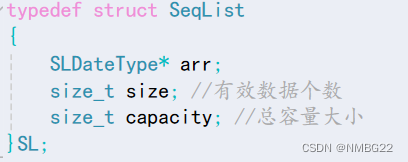
1.2 顺序表的初始化
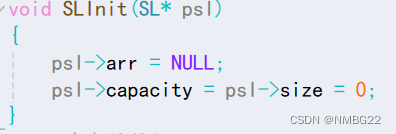
1.3 顺序表的销毁
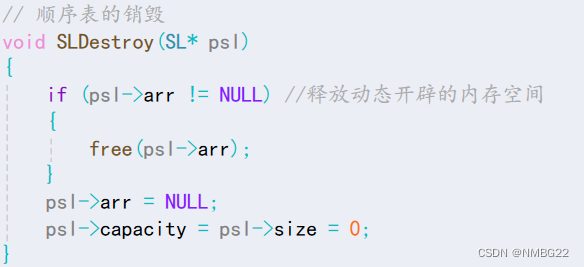
1.4 顺序表容量的检查与调整(最关键的部分)
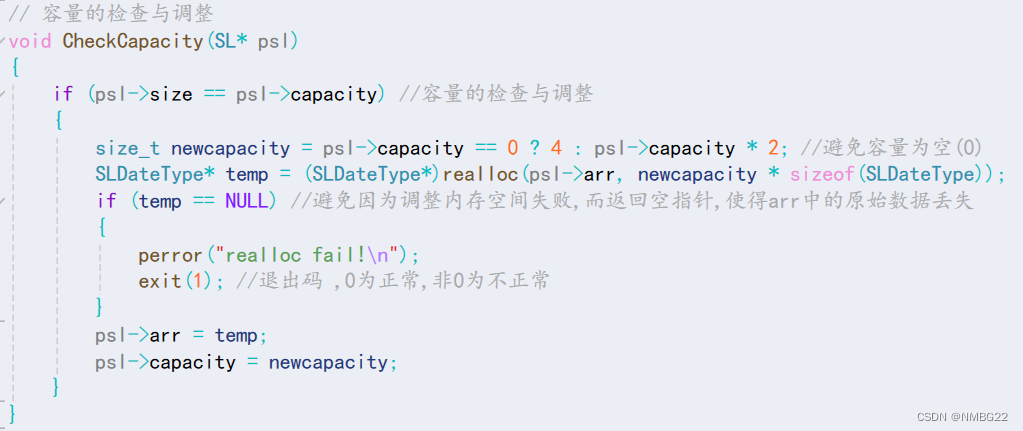
1.5 顺序表的尾插

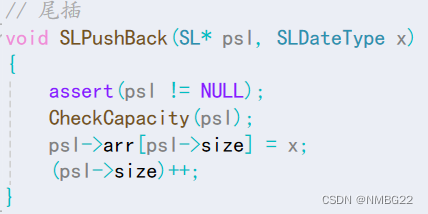
1.6 顺序表的头插
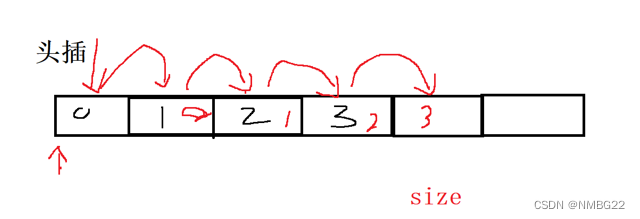
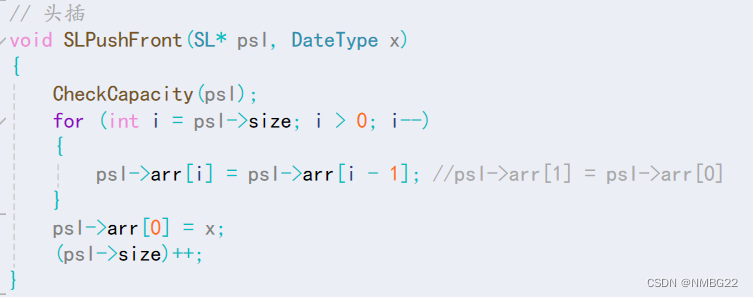
1.7 顺序表的尾删
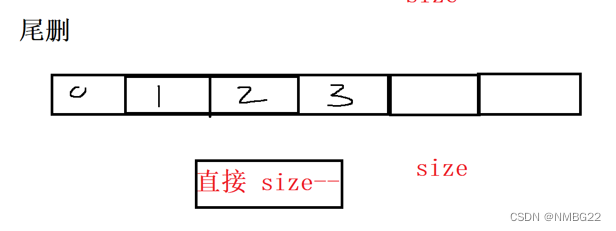
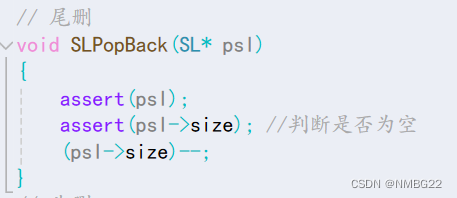
1.8 顺序表的头删
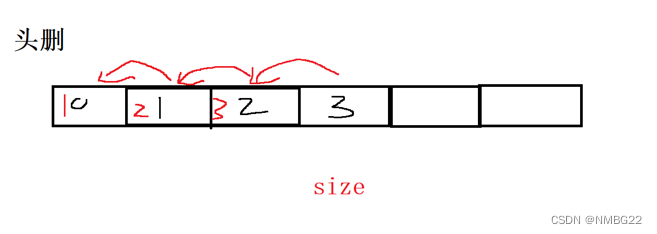

1.9 顺序表中在指定位置之前插入数据
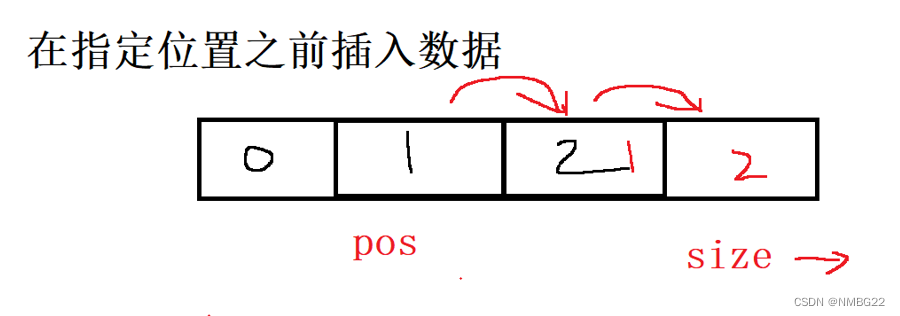
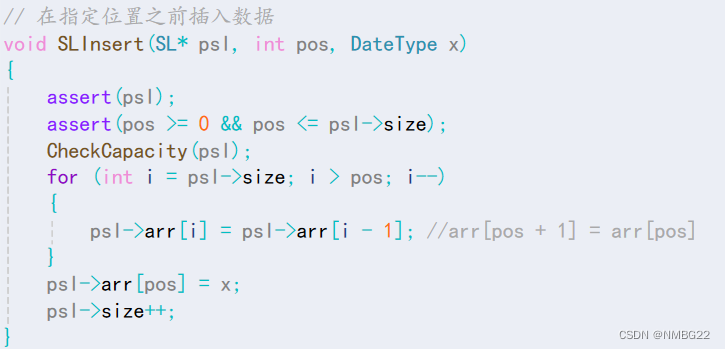
1.10 删除指定位置的数据
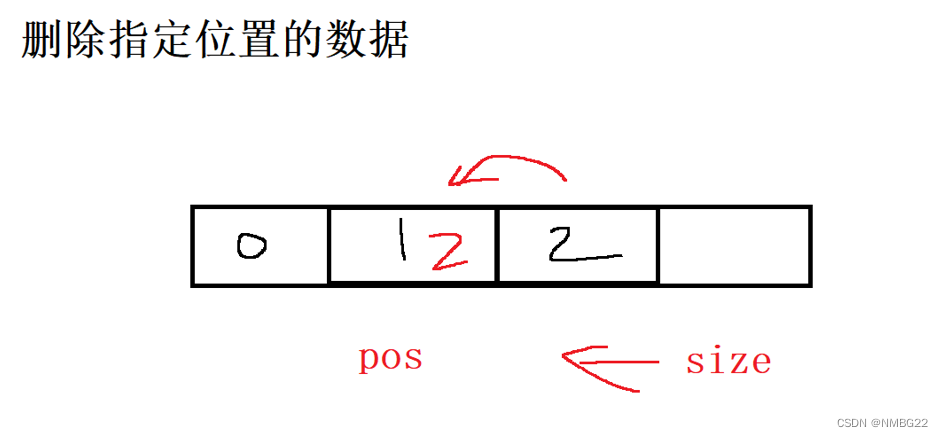
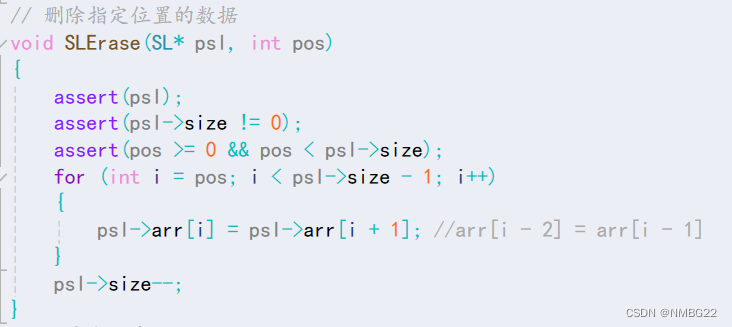
1.11 顺序表中查找指定数据
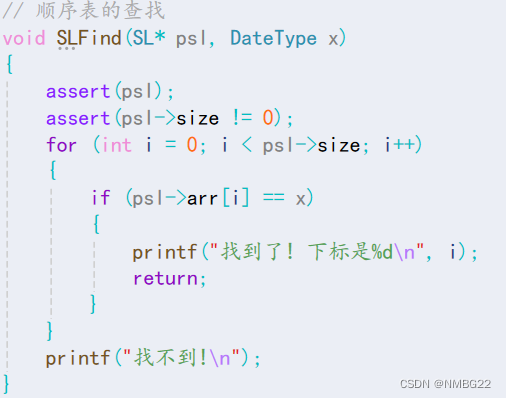
二.顺序表源码
SeqList.h
#pragma once#include <stdio.h>#include <stdlib.h>#include <assert.h> 静态顺序表//struct SeqList//{//int arr[100];//int size;//};// 动态顺序表的定义typedef int DateType; //数据类型typedef struct SeqList{DateType* arr;int size; //数组中的有效元素个数int capacity; //数组的总容量}SL;// 顺序表的初始化void SLInit(SL* psl);// 顺序表的销毁void SLDestroy(SL* psl);// 打印检查void SLprint(SL sl);// 容量检查与调整void CheckCapacity(SL* psl);// 尾插-头插void SLPushBack(SL* psl, DateType x);void SLPushFront(SL* psl, DateType x);// 尾删-头删void SLPopBack(SL* psl);void SLPopFront(SL* psl);// 在指定位置之前插入数据void SLInsert(SL* psl, int pos, DateType x); //pos:点// 删除指定位置的数据void SLErase(SL* psl, int pos);// 顺序表的查找void SLFind(SL psl, DateType x);SeqList.c
#define _CRT_SECURE_NO_WARNINGS#include "SeqList.h"// 顺序表的初始化void SLInit(SL* psl){psl->arr = NULL;psl->size = psl->capacity = 0;}// 顺序表的销毁void SLDestroy(SL* psl){if (psl->arr){free(psl->arr); //释放动态开辟的内存空间}psl->arr = NULL;psl->size = psl->capacity = 0;}// 容量检查与调整void CheckCapacity(SL* psl){if (psl->size == psl->capacity) //空间不够了,需要进行扩容{int newCapacity = psl->capacity == 0 ? 4 : psl->capacity * 2; //避免 psl->capacity初始容量为空DateType* temp = (DateType*)realloc(psl->arr, newCapacity * sizeof(DateType));if (temp == NULL) //避免因为realloc调整空间失败,而导致psl->arr中的数据被清除{perror("realloc fail!");exit(1);}psl->capacity = newCapacity;psl->arr = temp;}}// 尾插void SLPushBack(SL* psl, DateType x){CheckCapacity(psl);// 插入psl->arr[psl->size] = x;psl->size++;}// 头插void SLPushFront(SL* psl, DateType x){CheckCapacity(psl);for (int i = psl->size; i > 0; i--){psl->arr[i] = psl->arr[i - 1]; //psl->arr[1] = psl->arr[0]}psl->arr[0] = x;(psl->size)++;}// 尾删void SLPopBack(SL* psl){assert(psl);assert(psl->size); //判断是否为空(psl->size)--;}// 头删void SLPopFront(SL* psl){assert(psl);assert(psl->size); //判断是否为空for (int i = 0; i < psl->size - 1; i++){psl->arr[i] = psl->arr[i + 1]; //psl->arr[psl->size - 1] = psl->arr[psl->size - 2]}(psl->size)--;}// 在指定位置之前插入数据void SLInsert(SL* psl, int pos, DateType x){assert(psl);assert(pos >= 0 && pos <= psl->size);CheckCapacity(psl);for (int i = psl->size; i > pos; i--){psl->arr[i] = psl->arr[i - 1]; //arr[pos + 1] = arr[pos]}psl->arr[pos] = x;psl->size++;}// 删除指定位置的数据void SLErase(SL* psl, int pos){assert(psl);assert(psl->size != 0);assert(pos >= 0 && pos < psl->size);for (int i = pos; i < psl->size - 1; i++){psl->arr[i] = psl->arr[i + 1]; //arr[i - 2] = arr[i - 1]}psl->size--;}// 顺序表的查找void SLFind(SL* psl, DateType x){assert(psl);assert(psl->size != 0);for (int i = 0; i < psl->size; i++){if (psl->arr[i] == x){printf("找到了! 下标是%d\n", i);return;}}printf("找不到!\n");}// 打印void SLprint(SL sl){for (int i = 0; i < sl.size; i++){printf("%d ", sl.arr[i]);}printf("\n");}